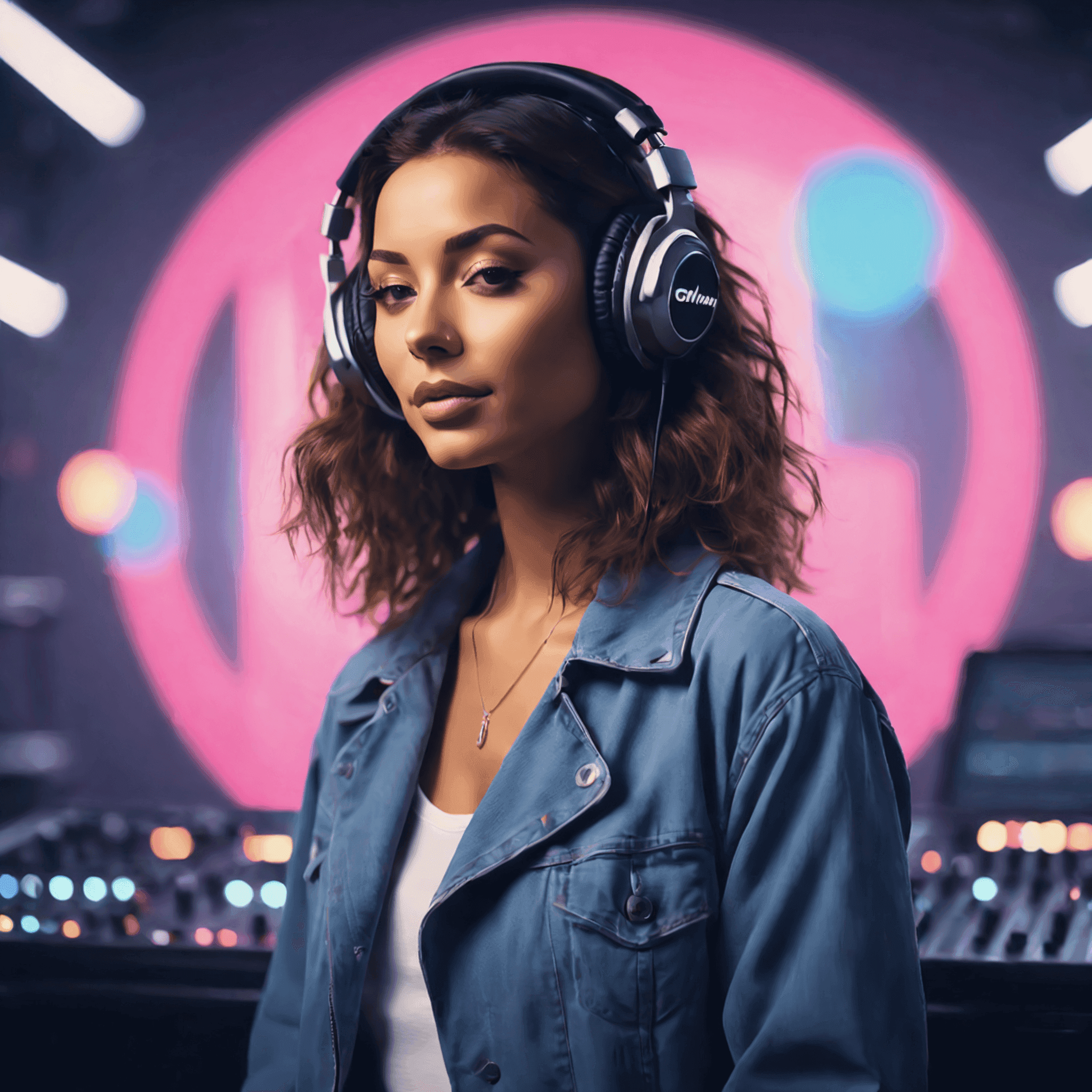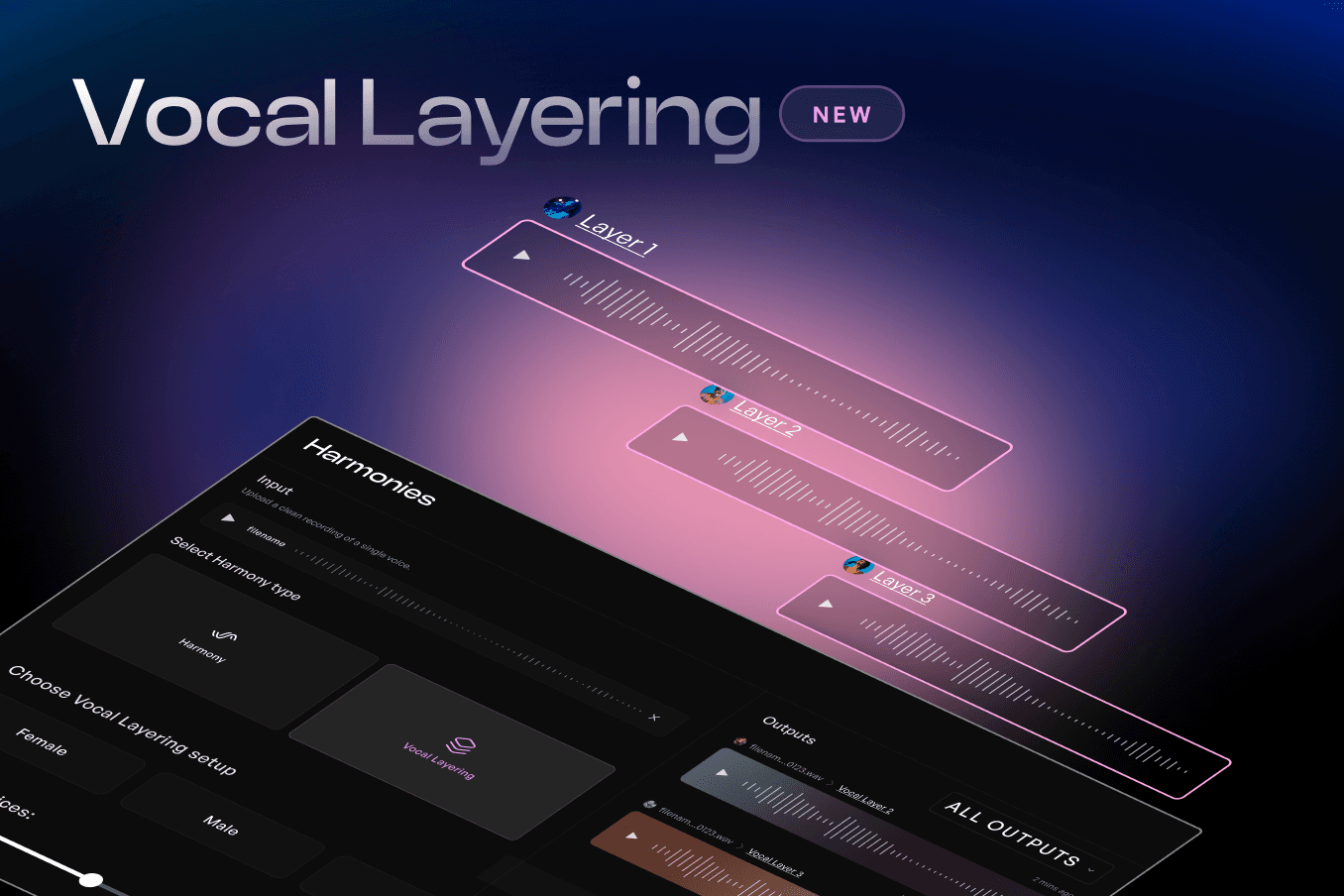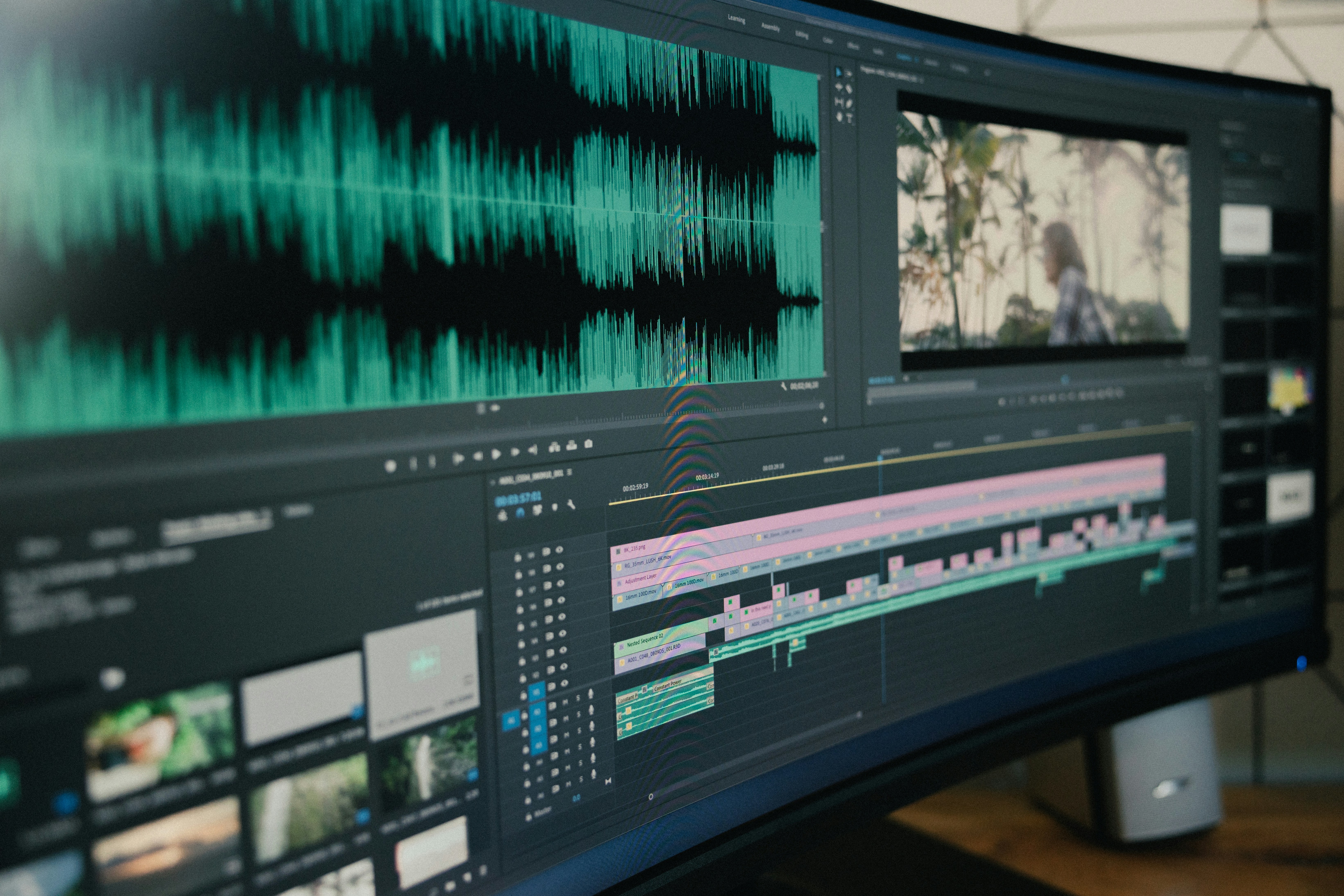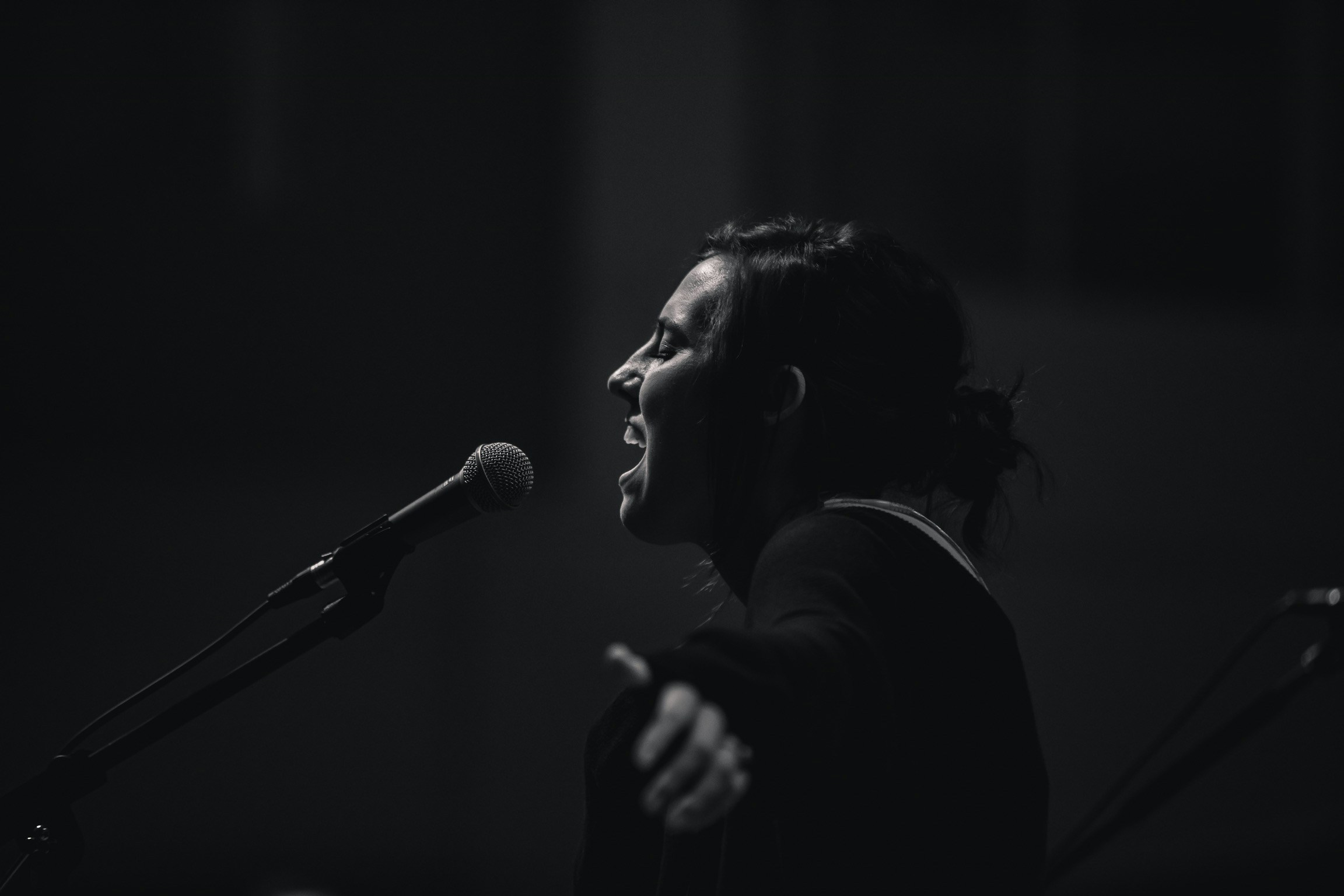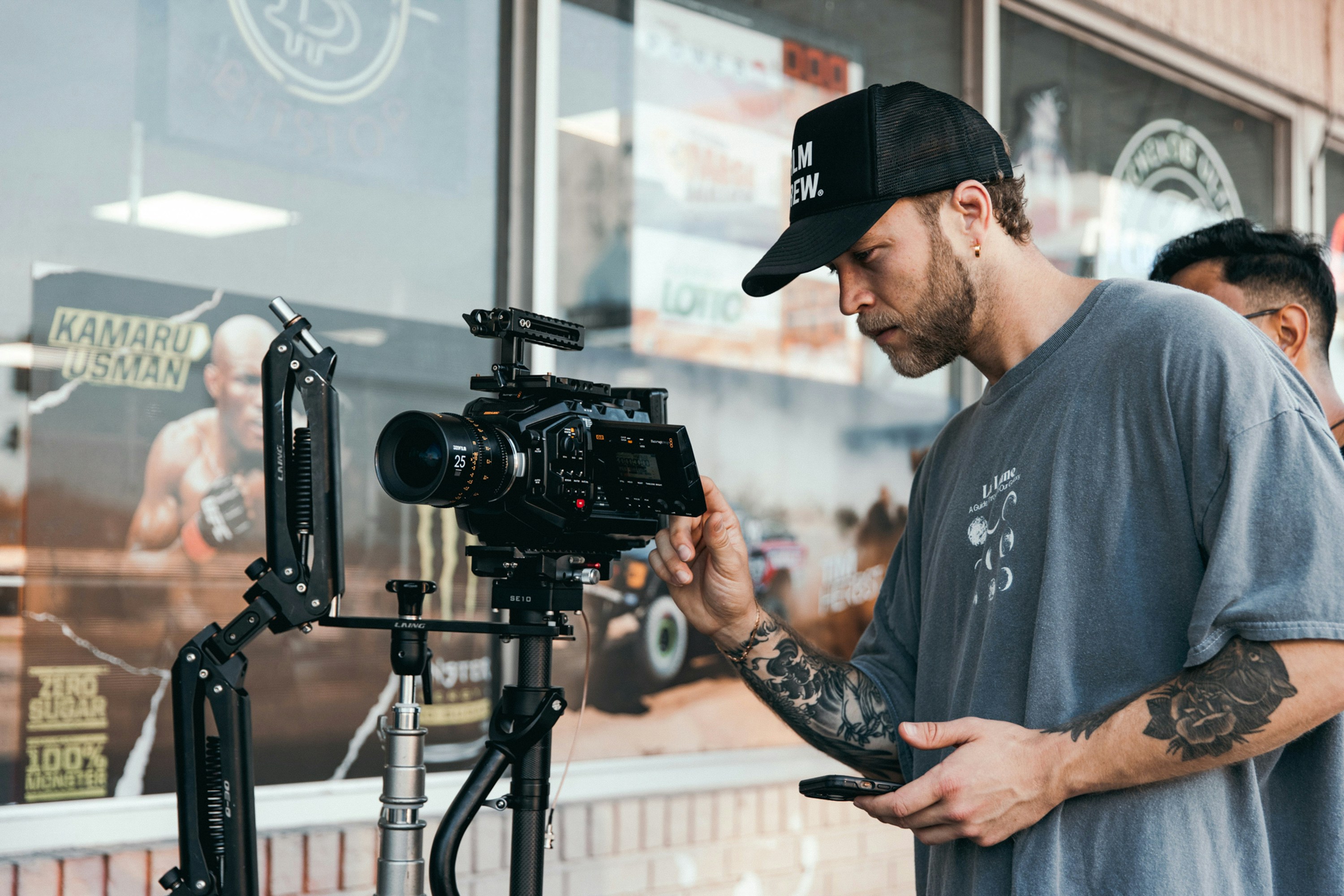How to Create Unique AI Voices for Your Music
Written by
Published on
January 29, 2024
Understanding AI Voice Technology
The fusion of artificial intelligence with music production is transforming the soundscape, offering an array of tools to craft the auditory experience. AI voice technology, in particular, is a game-changer, enabling synthetic speech of such high quality that it mirrors the nuanced dynamics of human expression. For independent music producers, this innovation means an expansion of creative possibilities, where unique voices can be synthesized to complement their compositions.
At the heart of AI voice synthesis lies deep learning, a subset of machine learning where artificial neural networks learn from large amounts of data. The goal is to create voices that don't just sound human-like but convey emotion and personality, matching the pitch, tone, and pace of natural speech. The process typically involves a variety of techniques, from concatenative synthesis, which pieces together pre-recorded speech segments, to newer methods that generate voice from scratch based on learned patterns.
Grasping the basics of these technologies is crucial, as each serves different needs and end goals. Whether your project requires the warm timbre of a soulful singer or the crisp enunciation of a pop artist, selecting the right voice generation technique is a foundational step in the creation process.
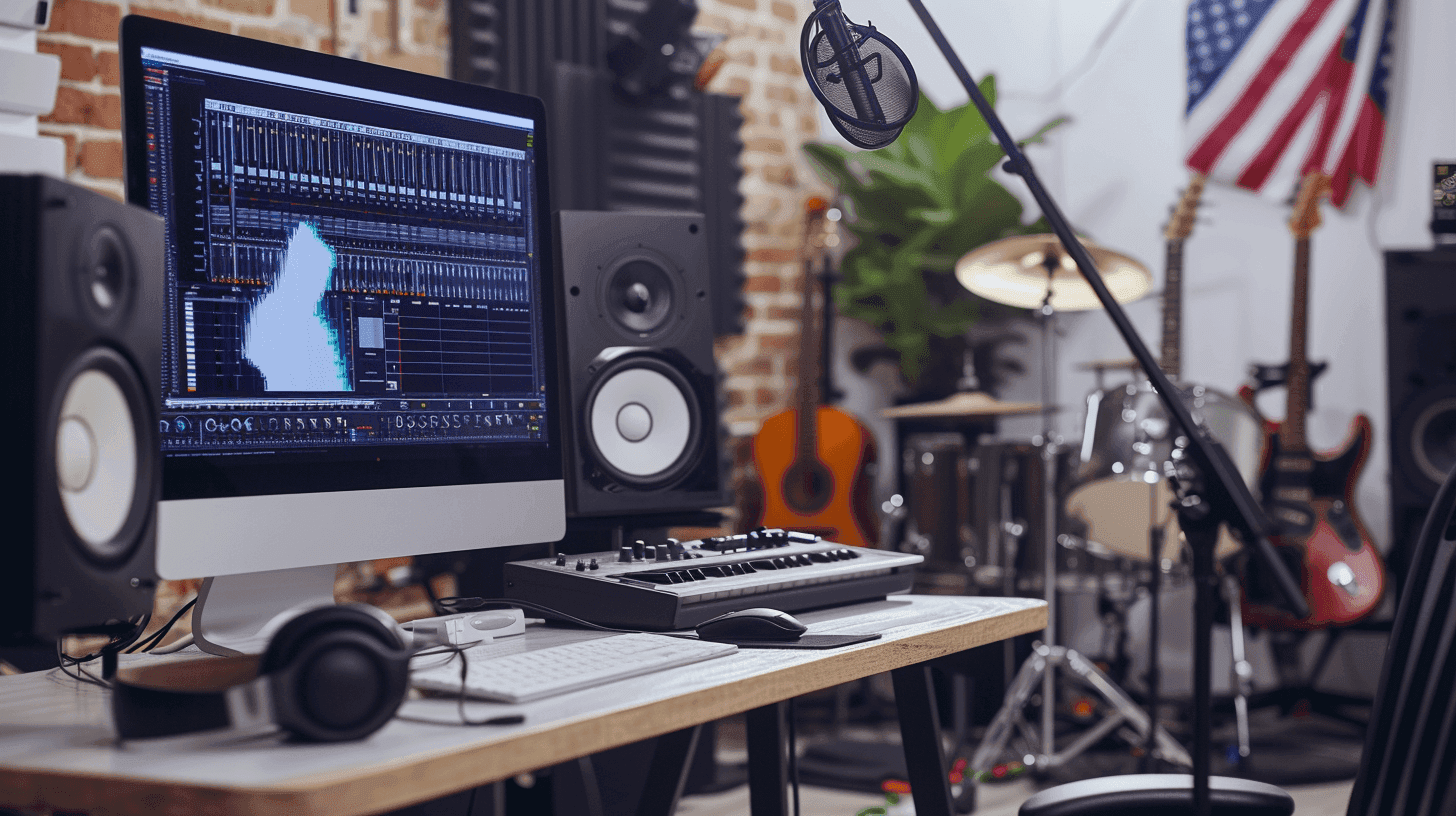
Preparing for AI Voice Creation
Before diving into the technicalities of voice synthesis, you need a clear vision for the voice you want to bring to life. Are you aiming for a voice that's robust and resonant, or one that's ethereal and otherworldly? The preparation stage involves gathering data, which could include recording your own voice samples or utilizing existing datasets. The quality and variety of this data will directly impact the AI's learning process and the authenticity of the voice you're aiming to produce.
In the realm of music production, where distinctiveness is key, the data methods and the subsequent training of your AI model become the bedrock of your creative output. This preparation ensures that when it's time to train your AI, you're equipped with the right resources to facilitate a smooth and successful learning process.
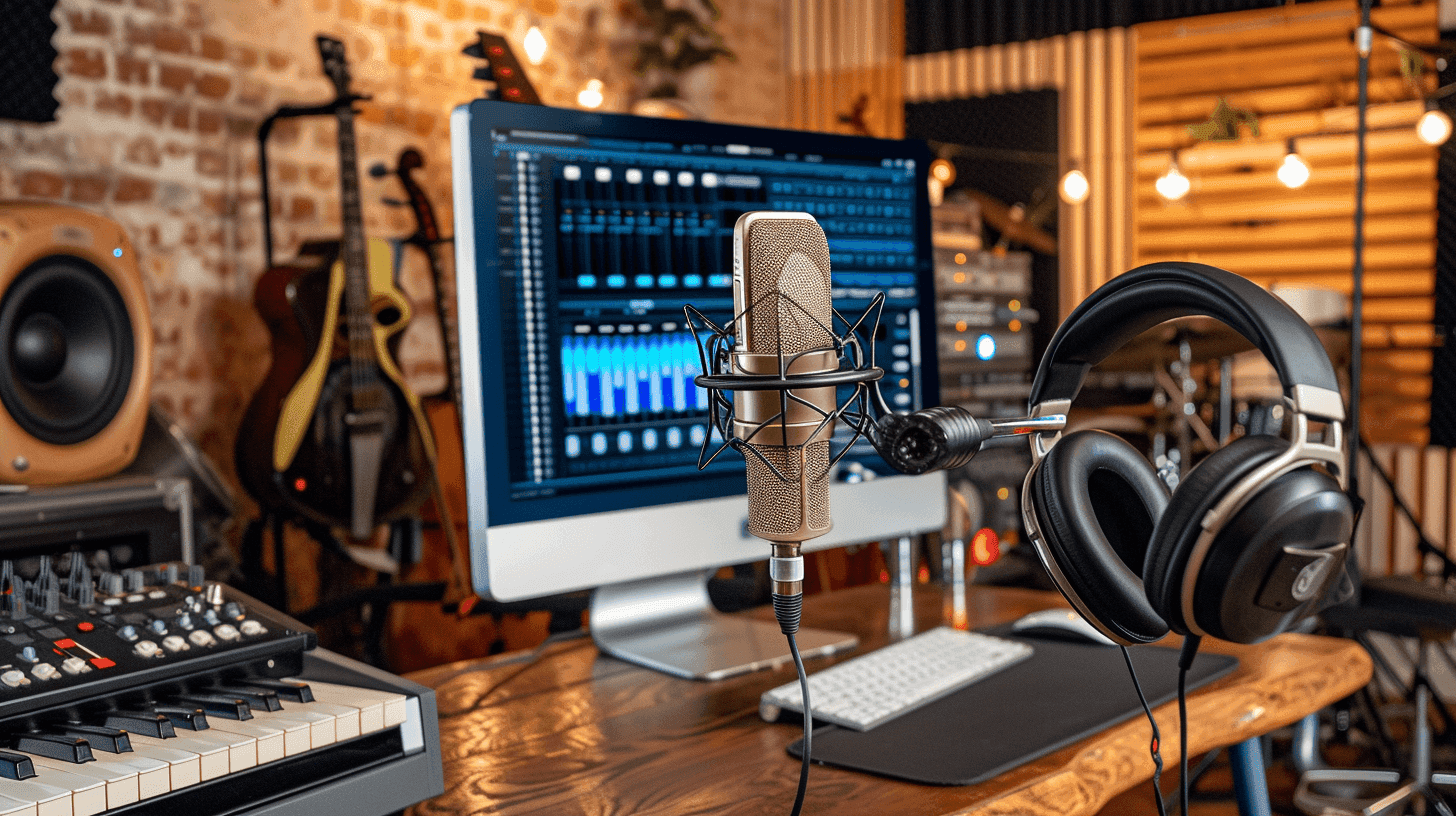
Step-by-Step Guide to Creating AI Voices
Selecting Your AI Voice Generation Tool
The first actionable step is choosing an AI voice generation tool. There's a variety of software available, each with its own strengths. From Kits AI to other solutions like Musicfy and Voicify, options are abundant. These tools offer varying degrees of customizability and integration capabilities, so take time to explore and select one that aligns with your artistic vision and technical requirements.
Training Your AI Model
Once you've selected your tool, the next step is to clone your AI model with the voice data you've gathered. This process involves feeding your selected AI system with voice samples, which it will analyze to understand how to replicate speech patterns, inflections, and emotional nuances. Follow these steps as you train your model for the best outcome:
Enter the Kits Voice Cloning tool
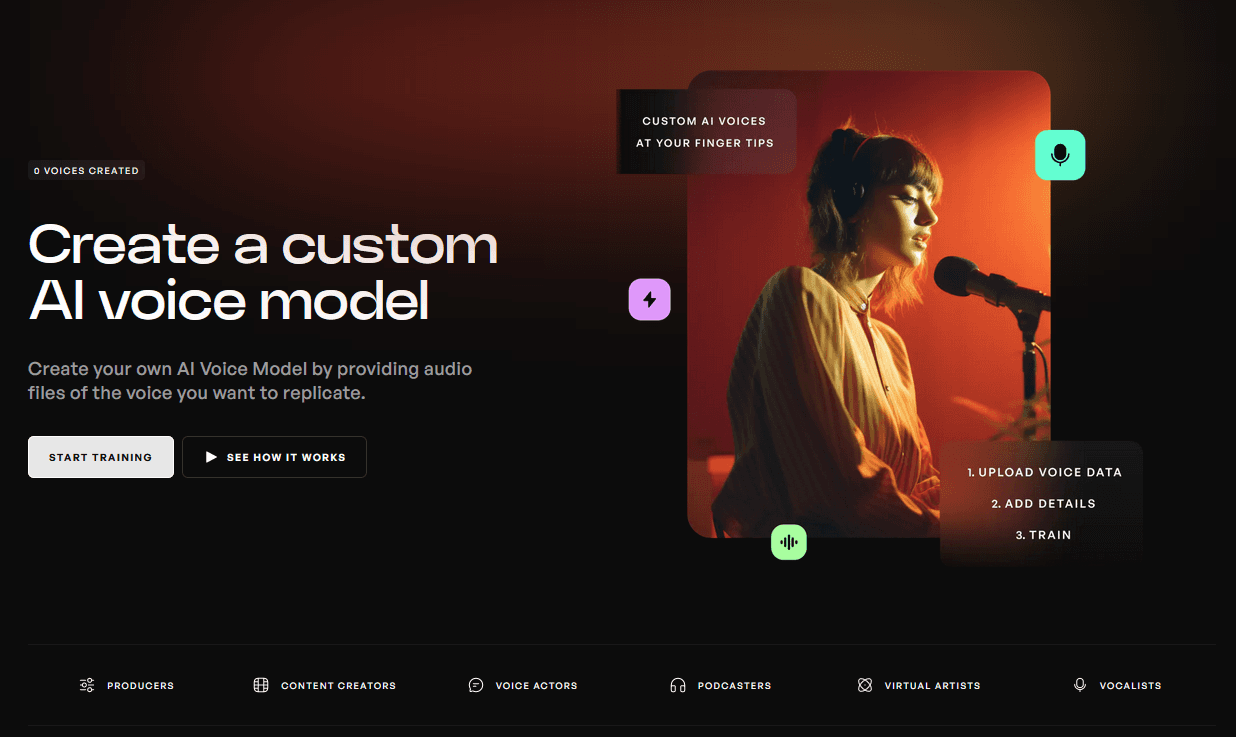
Upload an audio file. Kits accepts uploads up to 60 minutes, but recommends a length of 10 minutes to optimize speed and quality.
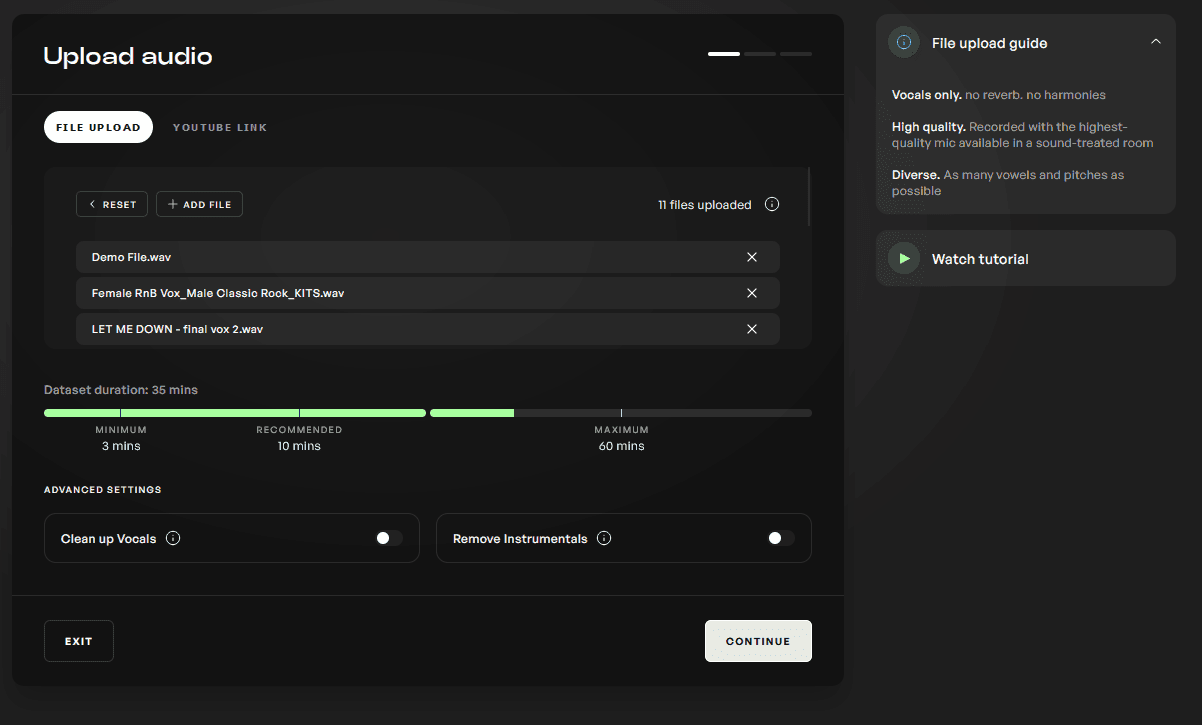
Adjust settings such as cleaning up vocals, removing instrumentals. Add an image and name for your model and proceed to begin the training process.
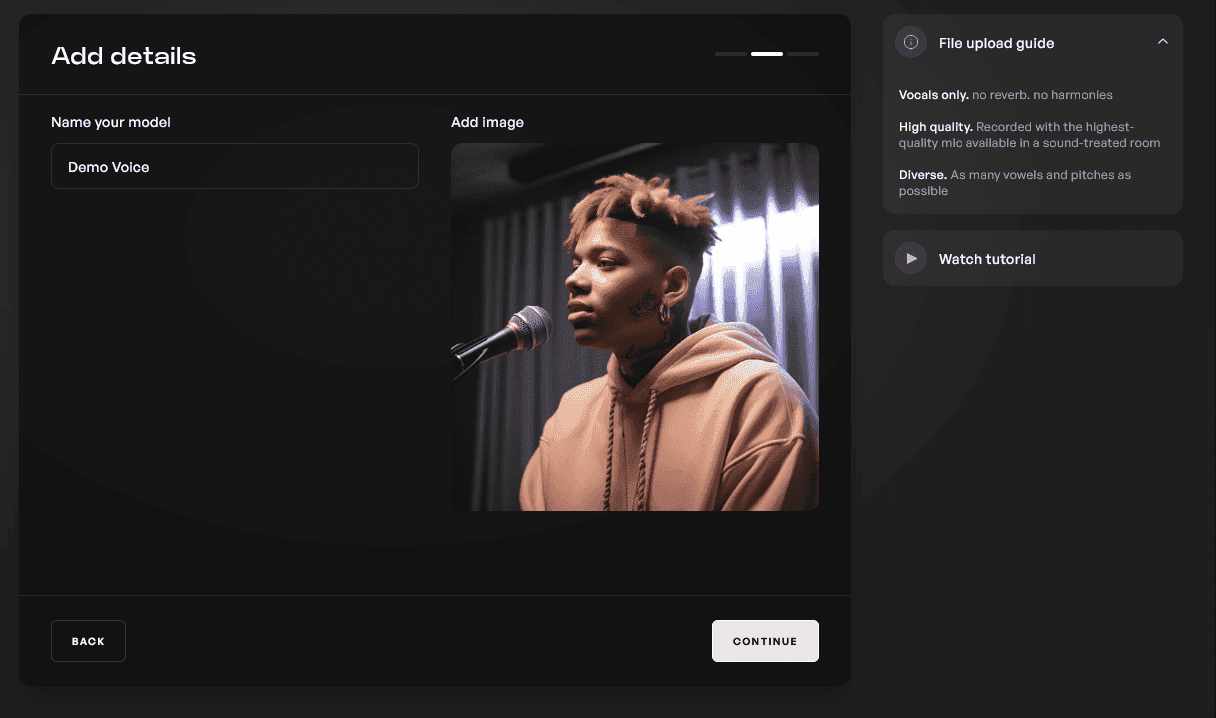
Monitor the AI's progress and make adjustments to the training data as needed to improve the quality of the output.

Customizing the Voice
After training, you get to the fun part: shaping the AI voice to your specifications. Here, you can adjust parameters like pitch, tone, and pace, refining the voice to perfectly fit your musical piece. It's an iterative process, involving a little trial and error, but the goal is a unique AI voice that elevates your music, giving it a signature sound that stands out.
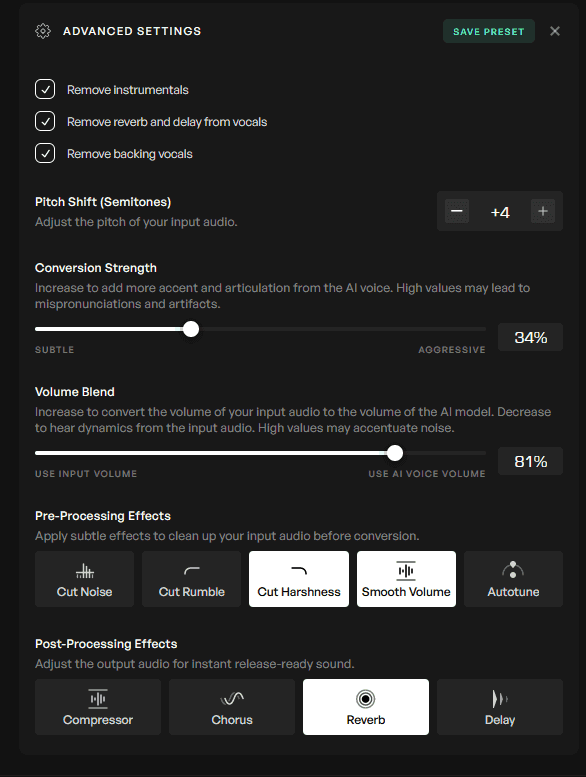
Integrating the AI Voice into Your Music Production
With the voice refined, the next move is to bring it into your Digital Audio Workstation (DAW). Integration is a vital step, as it's where you blend the AI-generated voice with your instrumentation, harmonies, and rhythms. This is where your production skills come into play, ensuring that the voice sits well in the mix and contributes to the overall sonic experience of your track.
In each step of this journey, you're not alone. The music production community is a vibrant collective, sharing insights and breakthroughs. With tools like AI voice synthesis at your disposal, you're well-equipped to push the boundaries of creativity, bringing forth music that resonates and inspires.
Overcoming Challenges in AI Voice Creation
Creating an AI voice that resonates with listeners isn't without its hurdles. One common challenge is imbuing your synthetic voice with genuine emotional expression. Human voices naturally ebb and flow with emotion, a subtlety that can be elusive for AI. Another obstacle is avoiding the uncanny valley, where a voice is almost human-like but has just enough artificiality to be unsettling.
To navigate these challenges, focus on refining the nuances of your AI voice. Adjusting inflections, varying speech patterns, and incorporating breath sounds can enhance the natural quality of the voice. Routine testing with various musical arrangements can also provide insight into how to improve the voice's emotional range. When you hit a snag, consider revisiting your data and training processes, ensuring they're robust enough to capture the depth you seek in your AI voice. The insights from the guide on creating synthetic voices can be instrumental in this stage, offering strategies to enhance the quality of your AI-generated vocals.
Ethical Considerations and Best Practices
While AI voices open up new creative avenues, they also raise ethical questions, especially when replicating the voices of actual artists. It's crucial to navigate this new terrain with respect for intellectual property and a commitment to transparency. When using AI to mimic an artist's voice, always seek permissions where necessary, and give credit to the original artist when it's due.
Adhering to best practices involves not only respecting legal boundaries but also maintaining a level of artistic integrity. Use AI as a tool to complement your creativity, not to replace the human element that defines the musical experience. By doing so, you uphold the values that keep the music community vibrant and innovative.
Conclusion
The steps outlined above provide a roadmap for harnessing the power of AI in voice creation for your music production. From understanding the technology to integrating AI voices into your tracks, each phase is an opportunity to refine your skills and expand your creative potential. Remember, the ultimate goal is to create music that connects with your audience, and AI voices are just one of many tools at your disposal to achieve that.
Comparison of AI Voice Generation Tools

Quick Tips for Training Your AI Model
Ensure high-quality voice samples: The clarity of your voice samples can make or break the AI's learning process.
Diversify your dataset: A varied voice dataset helps your AI handle a broader range of musical contexts.
Regularly test your AI voice: Listening to how the voice performs in different musical scenarios allows you to make necessary refinements.
With these steps and considerations, you're well on your way to creating unique AI voices that can take your music to new heights. As you explore the capabilities of AI in your music production, you not only push the limits of technology but also contribute to the ever-evolving art form that is music. Embrace the process, learn from the community, and let your creativity soar with the support of AI technology.
